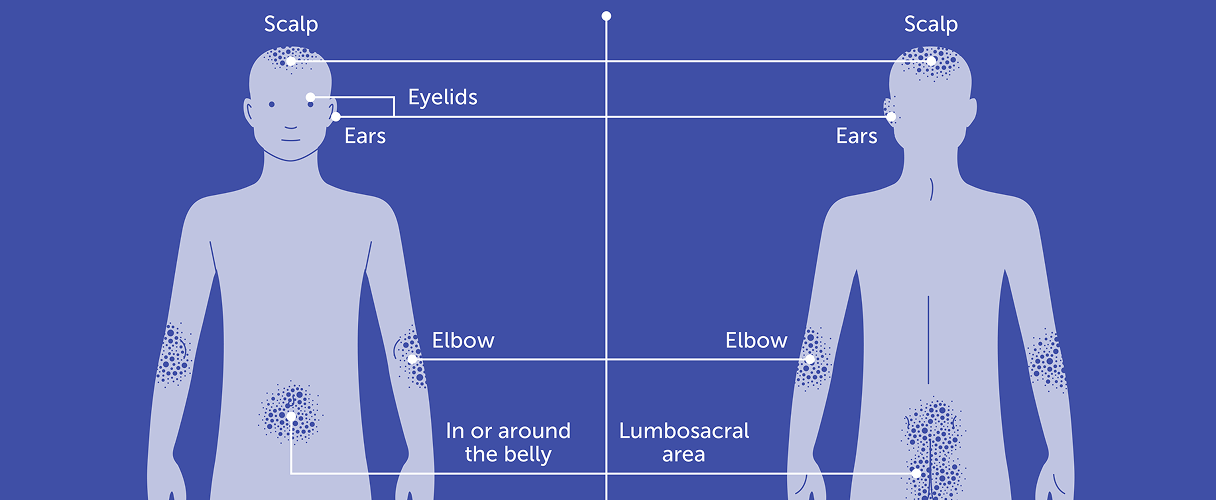Learn about what patients with psoriasis experience, from the initial diagnosis to medications and self-care measures required to manage symptoms.

Date of preparation: December 2024
Learn about what patients with psoriasis experience, from the initial diagnosis to medications and self-care measures required to manage symptoms.

The psoriasis patient journey
There is currently no cure for psoriasis.1,2 The condition is lifelong, often with an unpredictable relapsing–remitting clinical course, and patients may require courses of treatment throughout their life.2–4
Disease emergence
For many people, their psoriasis journey starts when they consult with their GP after noticing a persistent rash.3,4 The GP can usually make a psoriasis diagnosis, based on an examination of the skin, scalp and nails, and will prescribe a topical treatment.3,4

Figure 1: Overview of diagnostic criteria for psoriasis5,6
Most patients are referred to a dermatologist at some point in the course of their disease.4
Treatment cycle
Some patients may require a variety of topical and/or conventional systemic therapies (e.g., methotrexate, cyclosporine and acitretin), as well as hospital-based phototherapy, to keep their symptoms under control over their disease course.4 Those who do not respond to these treatments should be escalated to biologic therapy.4,7 There is a variety of treatment options available, and it can take trial and error to find the best regimen for a patient, although delays in using biologics can impact their efficacy.2,3,8 Critically, patients should be involved in the decision-making process.7
Living with a chronic disease
Psoriasis can flare up at any time: some patients go for long periods without any symptoms, whereas others experience flares often.9 Patients should be supported to adopt self-care measures to reduce flare frequency, particularly:2,10
It is important that healthcare professionals understand how challenging having psoriasis can be for patients.11 Over time, many patients learn to come to terms with the concept of living with a chronic disease and establish effective coping strategies to minimise the impact of psoriasis on their day-to-day lives.

Figure 2: Overview of the psoriasis patient journey4,7
Other articles you might like
You can read more articles that might interest you.
Want to see more articles?
Can’t find the answer you’re looking for? See all the Resources we have.